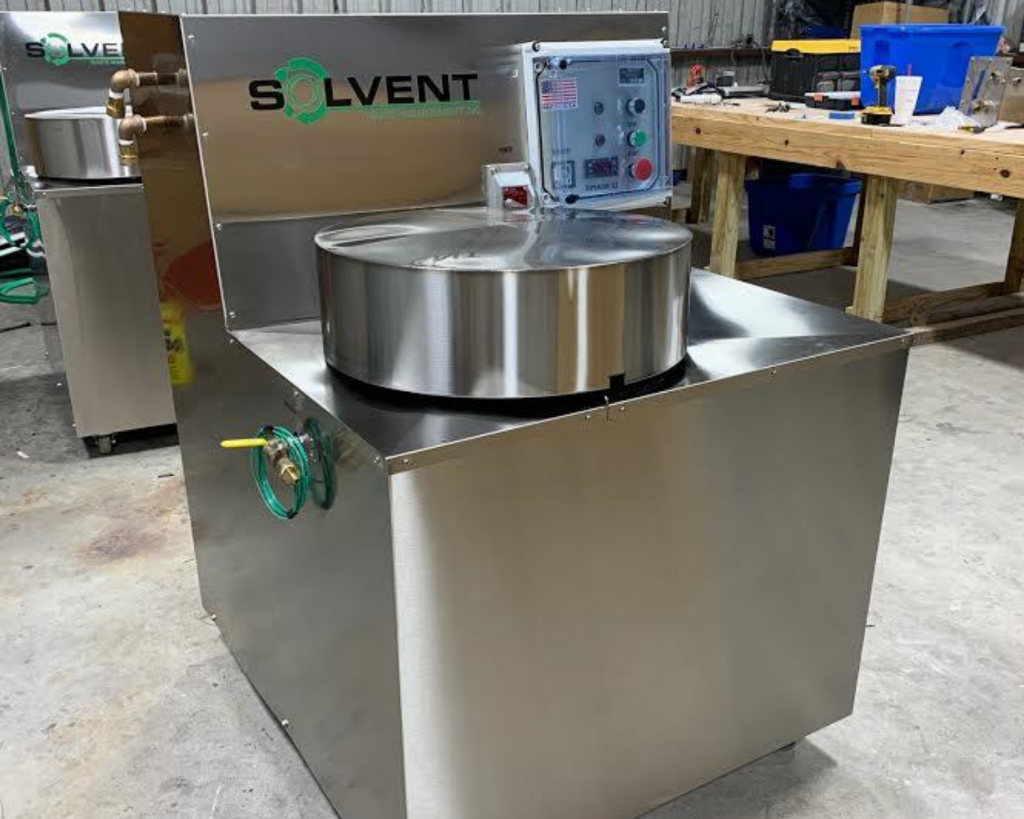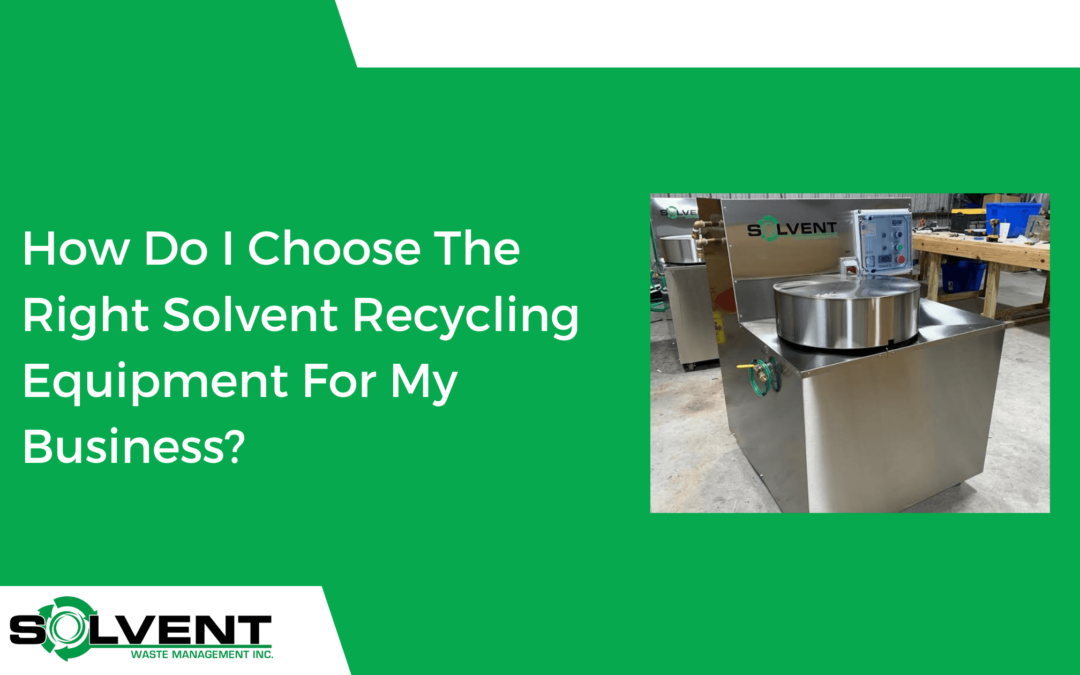Solvent recycling is a critical component for businesses looking to reduce waste, minimize their environmental impact, and cut operating costs. With an array of solvent recycling equipment available in the market, making the right choice can be a daunting task.
This blog post aims to guide businesses in selecting the most suitable equipment based on their specific requirements, efficiency, and sustainability goals.
Understand Your Business Needs
Before investing in solvent recycling equipment, it’s essential to analyze your business requirements. Evaluate the types of solvents used, the volume of solvents processed, available space, and regulatory compliance. Identifying these factors will help narrow down equipment options and ensure the chosen system meets your business needs.
Types Of Solvents Used
Solvent recycling machines can handle a variety of solvents used in different industries. The types of solvents that can be recycled typically depend on the recycling equipment and the specific application. Some common solvents that can be processed using solvent recycling machines include:
Alcohols: Methanol, ethanol, isopropanol, and butanol are some examples of alcohols commonly used in industries such as pharmaceuticals, cosmetics, and paints. They can be recycled using various recycling methods like distillation or membrane separation.
Ketones: Acetone, methyl ethyl ketone (MEK), and cyclohexanone are ketones frequently used as solvents in the paint, coatings, and adhesive industries. These can be recycled using distillation or adsorption systems.
Aliphatic hydrocarbons: Examples include hexane, heptane, and octane, which are used in the oil and gas industry, as well as in the production of adhesives and inks. Distillation is a common method for recycling these solvents.
Aromatic hydrocarbons: Toluene, xylene, and benzene are aromatic hydrocarbons often used as solvents in paint, coatings, and the chemical industry. These solvents can be recycled using distillation or adsorption methods.
Chlorinated solvents: Trichloroethylene, perchloroethylene, and methylene chloride are examples of chlorinated solvents used in dry cleaning, metal cleaning, and degreasing applications. Distillation and adsorption techniques can be used to recycle these solvents.
Ethers: Examples include ethyl ether, isopropyl ether, and tetrahydrofuran (THF), which are used in pharmaceuticals, laboratories, and as extraction solvents. These can be recycled using distillation or membrane separation methods.
Esters: Ethyl acetate, butyl acetate, and propylene glycol methyl ether acetate (PGMEA) are esters commonly used in paint, coatings, and electronic industries. Distillation is the most common method to recycle these solvents.
Glycols: Examples include ethylene glycol, propylene glycol, and diethylene glycol, which are used in the production of antifreeze, coolants, and some inks. These can be recycled using distillation or membrane separation methods.
Keep in mind that not all solvent recycling machines can handle all types of solvents. It is crucial to determine the specific solvents used in your business processes and choose a recycling machine that is compatible with those solvents.
Types Of Solvent Recycling Equipment
There are various solvent recycling equipment options available, each with its advantages and limitations depending on the solvents used and the desired recovery rates. Some common types of solvent recycling equipment include:
Distillation units: Distillation is a widely used method for solvent recycling that separates components based on their boiling points. There are two main types of distillation units:
a. Simple distillation: This method is best suited for separating solvents with significantly different boiling points. It is a cost-effective option for businesses with straightforward solvent mixtures and lower recycling volumes.
b. Fractional distillation: This method uses a fractionating column to separate solvents with closer boiling points. It is more suitable for complex mixtures and offers higher separation efficiency compared to simple distillation.
Adsorption systems: Adsorption is a process where solvents are separated by adhering to the surface of a solid adsorbent material, such as activated carbon or zeolites. This method is particularly useful for removing trace contaminants from solvents, as well as for recycling solvents with low boiling points that may be difficult to separate using distillation.
Membrane separation: This method uses semi-permeable membranes to separate solvents based on their molecular size, shape, or affinity for the membrane material. Membrane separation techniques, such as ultrafiltration, nanofiltration, and pervaporation, can be used to recycle solvents from various industries, including pharmaceuticals, petrochemicals, and food processing.
Vacuum evaporation: Vacuum evaporation systems lower the boiling point of solvents by reducing the pressure in the system, allowing for more efficient separation at lower temperatures. This method is suitable for heat-sensitive solvents and can result in higher purity recycled solvents.
Liquid-liquid extraction: This method involves using a secondary solvent (often water) to selectively dissolve and separate the target solvents from a mixture. Liquid-liquid extraction can be used for recycling solvents in various industries, such as chemical and pharmaceutical manufacturing.
Supercritical fluid extraction: This advanced method uses supercritical fluids, such as carbon dioxide, to dissolve and separate solvents from mixtures. Supercritical fluid extraction systems can achieve high separation efficiency, but they tend to be more expensive and require specialized equipment.
Each type of solvent recycling equipment has its unique advantages and is suitable for different applications. To choose the most appropriate equipment for your business, consider factors like the types of solvents used, desired recovery rates, and specific industry requirements.
Key Factors To Consider When Choosing Equipment
When choosing solvent recycling equipment for your business, several key factors should be considered to ensure you make the right decision. These factors play a crucial role in determining the long-term benefits and effectiveness of your investment:
Efficiency and recovery rates: High efficiency and recovery rates are essential to maximize the value of recycled solvents. Compare the performance of different equipment options, taking into account factors such as solvent type, purity, and concentration.
Operating costs: Consider the energy consumption, maintenance costs, and consumables needed for the equipment. Lower operating costs will result in better long-term savings for your business.
Ease of operation and maintenance: Choose equipment that is user-friendly and easy to maintain. This will help reduce downtime and ensure smooth operation, leading to increased productivity and cost savings.
Environmental impact and sustainability: Assess the environmental footprint of the equipment, including emissions and waste generation. Opt for equipment that aligns with your company’s sustainability goals and reduces its overall environmental impact.
Safety and hazard considerations: Evaluate the safety features of the equipment, such as explosion-proof designs or automated safety controls, to ensure the protection of your employees and facilities.
Space and facility requirements: Consider the size and space requirements of the equipment, making sure it fits within your existing facilities without requiring significant modifications.
Regulatory compliance: Ensure the equipment meets all applicable regulations and industry standards in your region. Non-compliance can lead to fines, penalties, and operational disruptions.
When selecting solvent recycling equipment, consider efficiency and recovery rates, operating costs, ease of operation and maintenance, environmental impact, and safety. These factors play a crucial role in determining the long-term benefits and effectiveness of your investment, ensuring your business achieves its sustainability and financial objectives.
In conclusion, selecting the right solvent recycling equipment for your business is a critical step in achieving your sustainability and financial goals. By understanding your business needs, exploring different types of equipment, and considering key factors like efficiency and recovery rates, you can make a well-informed decision that benefits your business in the long run.
Prioritizing sustainability and efficiency will not only help reduce waste and environmental impact but also contribute to a more responsible and prosperous future for your business.
About Solvent Waste Management
Since 1994, Solvent Waste Management, Inc. has assisted many companies in a variety of different industries not only improving their operations but also reducing costs.
Solvent Waste Management Inc. designs and manufactures solvent distillation equipment that cleans contaminated solvents, allowing users to restore and continuously reuse solvents – thereby saving money on the cost of disposal and the cost of new solvents.

Model SW8 Solvent Recovery System
Model SW30 Solvent Cleaning Machine
Model SW55 Solvent Recycler Machine
Model SW70 Solvent Recovery Equipment
Solvent Waste Management designs and manufactures solvent recycling equipment that cleans contaminated solvents in such a way that the customer can reclaim and reuse solvents again and again, thus saving on both the cost of solvent disposal and the cost of new materials.

